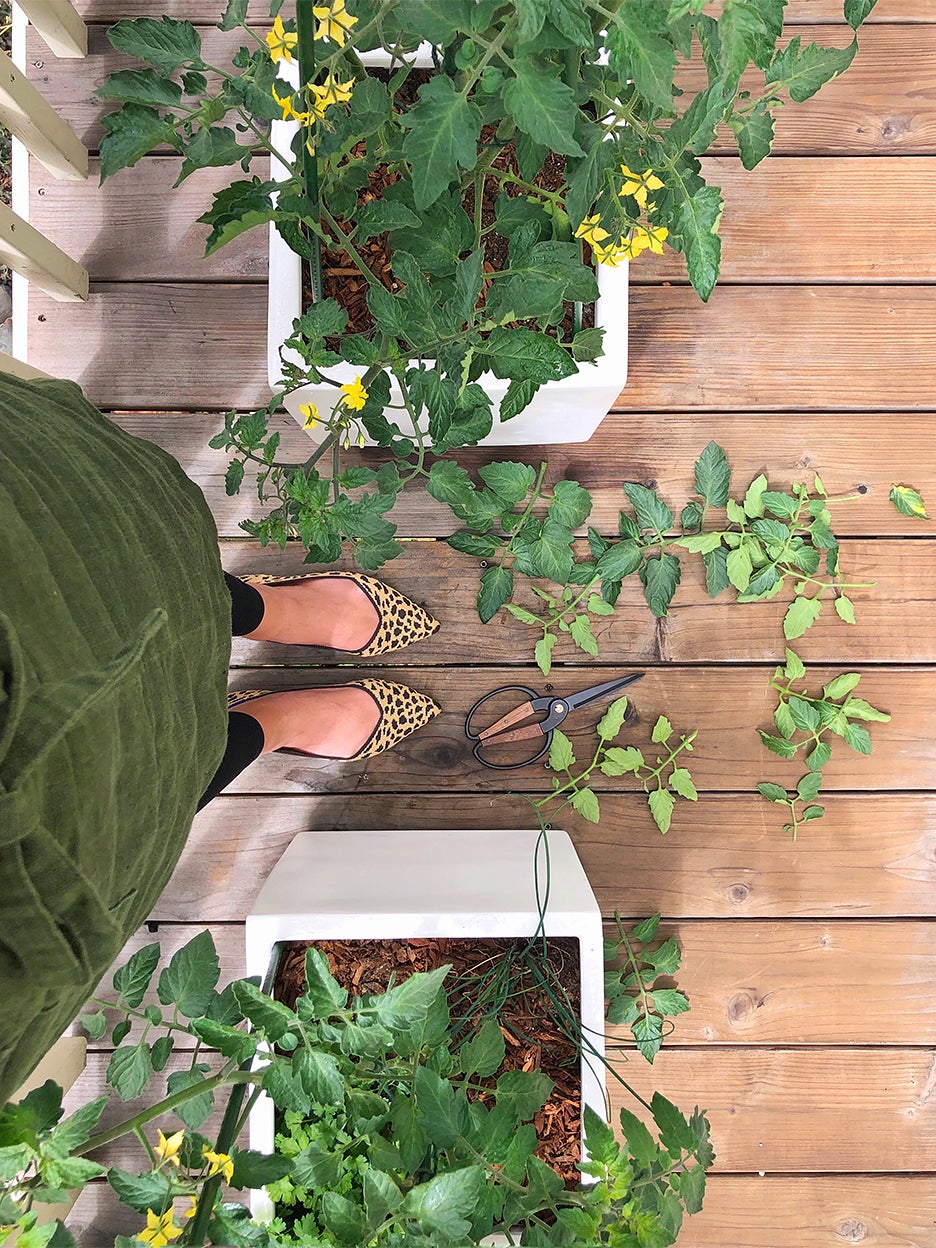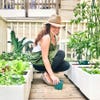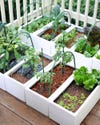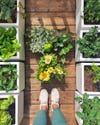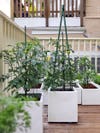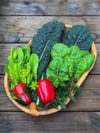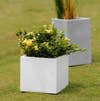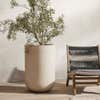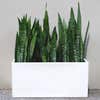This Gardener Grows 35 Herbs and Veggies on Her Tiny San Francisco Balcony
“I didn’t want to pay $20 for salads anymore.”
Updated Sep 27, 2018 10:44 AM
We may earn revenue from the products available on this page and participate in affiliate programs.
Like plenty of other people, photographer Leslie Santarina decided to give edible gardening a shot for the first time last year after waiting in one too many long lines at her local market. Pre-COVID, though, the lifelong San Franciscan had other motivations for growing her own arugula, beans, beets, radishes, and cherry tomatoes. “I didn’t want to pay $20 for salads in this city anymore,” says Santarina. “So I decided to grow a garden out my door.”
Santarina’s version didn’t sprout from a dirt plot in her backyard but rather a sunny, 57-square-foot, south-facing balcony off her one-bedroom flat. Her strategy? Maximize planting capacity to grow what she eats daily (like mixed lettuces), while leaving room for adventurous feats such as baby butternut squash and brussels sprouts. In total she manages pots, containers, and vertical growing space with some 35 herbs, vegetables, and pollinators. Want to know her secret? It starts with the right containers.
Don’t Weigh Down Your Balcony
Mindful of her San Francisco Victorian’s architecture, Santarina chose weather-resistant, lightweight fiberglass containers in different shapes and sizes to maximize her space. In total there are 24 of them, many of which are substantial enough to accommodate multiple plants. “I didn’t want my balcony to collapse under the weight of too many heavy terracotta, ceramic, and wood planters,” she explains.
Another plus? They’re a cinch to adjust. “You want to be able to move your plants around easily as the direction of the sun changes each season,” she says. A monochrome white palette has further advantages, like brightening up the space (a trick she picked up as photographer) and keeping it from feeling cluttered. No matter the container, don’t try to save money by passing on pot risers or drip pans. These help with drainage, collecting excess water and preventing puddles, which can cause rot on wood surfaces.
Put Your Plan on Paper
Leading up to planting season in March, Santarina creates a diagram of her balcony that documents the location of each plant, including the vertical areas for climbing veggies. A few iterations follow: “I’m able to move things around to ensure they fit,” she explains. “Also I have to factor in the sunny and shady spots and what will thrive best in those areas.” Her equation takes companion planting into consideration, too. “Things in the garden aren’t always best buds, so it helps to know which ones will get along with one another.” Two fava bean plants flank several sugar magnolia snap peas (“Both seem to be having fun climbing the tall trellis,” she says), with a couple varieties of carrots underneath. “Peas and carrots are perfect together,” she notes.
Plant in Phases
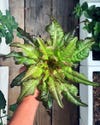
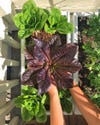
Now that she’s in her second year of gardening, Santarina is more practical when it comes to the limits of her balcony. “Not sure what I was thinking by trying to plant artichokes in my small space. Those plants are enormous!” she says. These days she’s intent on growing the veggies she wants to see when she opens her refrigerator: leafy greens, tomatoes, peppers, carrots, and plenty of herbs. That means planting in stages, to avoid the lettuce deficit she experienced in 2020. “I made the mistake of planting them all at once and had to harvest them at the same time,” she says. “I had too much lettuce to eat one month and nothing the next.” Staggering the plantings will ensure an even flow of ripe produce.
Don’t Forget the Pollinators
If you’re planting in an area with fewer direct neighboring plants, it’s even more important to consider an ecosystem that will lure pollinators such as butterflies, moths, bumblebees, honeybees, and beetles. Santarina skirts her containers with borage, nasturtium, and sunflowers, but there are plenty of herbs and floral types to choose from, including goldenrod, milkweed, daisies, and lavender. “I’m not much of a flower person,” she says. “But I’m all about the bees, and I need them so my tomatoes and peppers thrive.”
Keep Your Tool Kit Minimal
Snapping up all kinds of fancy gardening tools at your local hardware store can be irresistible, but for a small garden you need very few things. Santarina’s go-to: “A good watering can with a rosette head so you can water soil more evenly,” she says, “especially if you don’t have access to a hose.” Add a good pair of snips to your list, too, but if you’re anything like Santarina, you can skip the trowel and gardening gloves: “I love the feel of dirt on my hands. It’s quite soothing, and I can assess soil quality better that way.”
